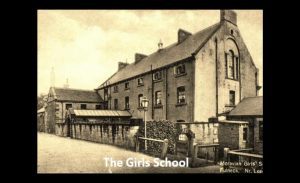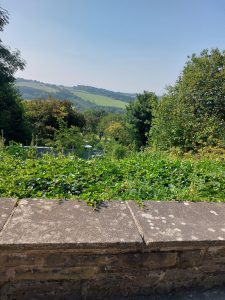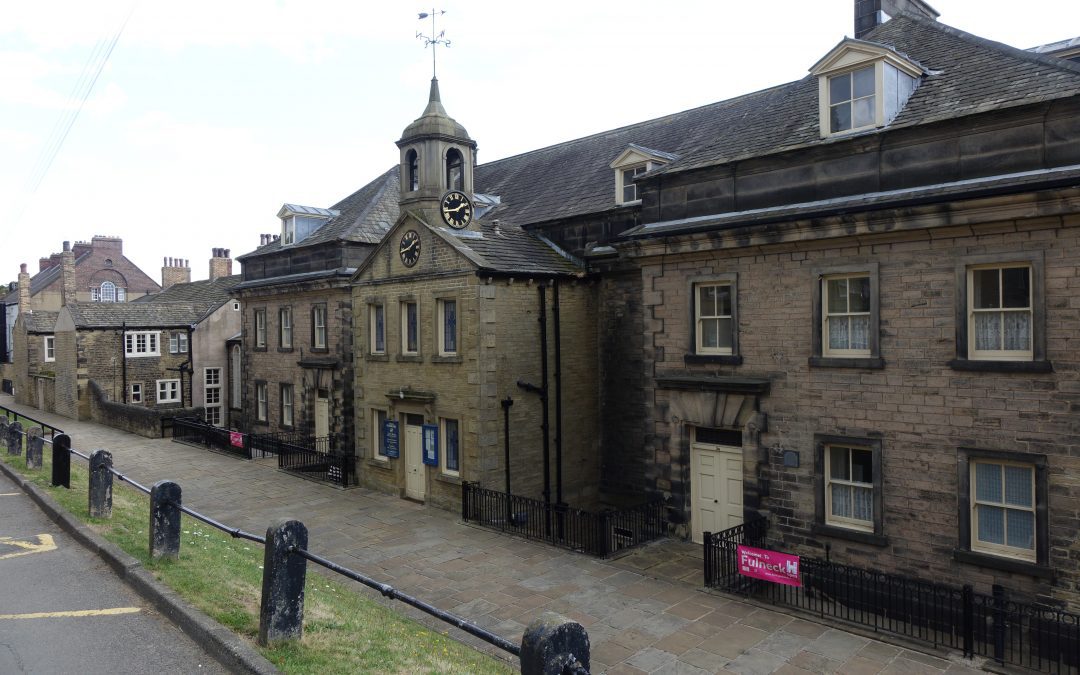Fulneck today would be recognised by Elizabeth
Over the past month I have had the pleasure of talking to a number of groups about Elizabeth: each group has been engaging and have asked questions that have opened up interesting conversations about her life, work and women’s rights. The Elizabeth Group in Congleton were particularly interested in finding out more about Fulneck and her time at school.
Thanks to the Fulneck museum and the archives I was able to illustrate my talk with slides and stories from the 1840s, thus providing a rich tale of a settlement where people lived, worked and worshipped together. For Elizabeth this was her home for two years while she gained the education she so desperately wished for. Of course, being a girl she could not follow her brother to Cambridge University even though she had the intelligence and desire to pursue further study.
Fulneck would provide her with a much broader and engaging education then was typical of the time. Moravian educational principles were developed by Jan Comenius, still regarded by many as the father of modern education. He believed that school should be fun, involving and should foster curiosity. In fact, he was the first educator to create a picture book to aid teaching, something we take so for granted today. It is quite likely that Elizabeth adopted these principles in her highly successful career as a headmistress.
While living at Fulneck Elizabeth will have seen Moravian women who ran their own businesses, with some travelling to London each month as part of their successful embroidery trade.
Life at Fulneck in the 1840s was hard as the whole country faced industrial unrest and rising prices. Despite this, life and work continued, worship took place regularly in the Church and the beautiful Tong valley provided a refreshing and ever-changing backdrop.
From Fulneck Elizabeth went on to pursue her education and to increasingly take up issues relating to women’s rights.
After working as a governess and opening a school in Manchester, Elizabeth settled in Congleton where she lived for most of her life. There she opened a school in Moody Hall which still stands today near the centre of the town. Sadly, it has fallen into disrepair and needs lots of TLC. The Elizabeth Group are setting up a campaign to buy the property and return it to its former glory: watch out for news on this significant project.
The pictures below illustrate Fulneck then and now.

Fulneck Girls school
 Fulneck is built on the side of Tong Valley and so Elizabeth will have looked out over this beautiful view.
Fulneck is built on the side of Tong Valley and so Elizabeth will have looked out over this beautiful view.

Fulneck terrace. The girls will have walked along this terrace; on warm days they could then have gone down into the woodland at the bottom of Tong Valley.
 Fulneck church organ plays out today as it will have done for each of the many services Elizabeth will have attended.
Fulneck church organ plays out today as it will have done for each of the many services Elizabeth will have attended.
Thanks to Fulneck Museum for many of these photographs.
Please get in touch if you would like to book a talk. All money raised from talks and book sales go to charity. You can also contact me to plan a tour of Fulneck and a visit to the Fulneck museum.
Thanks for taking the time to read my posts, you are always welcome to contact me. Mary


Recent Comments